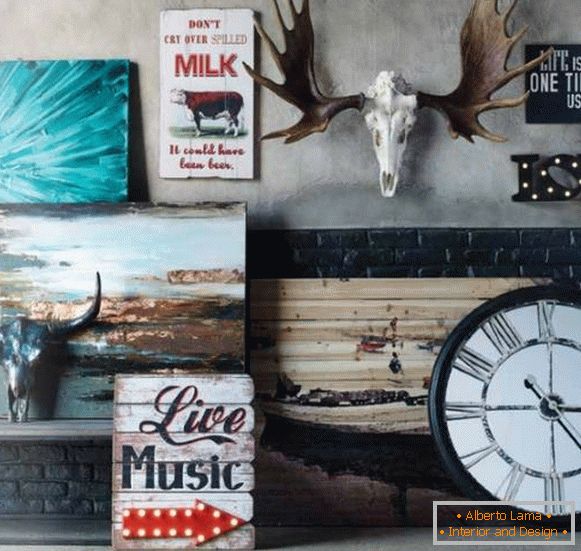
Despite the rich history, the Scandinavian style looks quite modern. Although the direction has a number of signs and is subject to certain theses, it conveys rather the spirit, the color of Scandinavia, rather than its specific features. The most important distinctive features of the characters of the northern peoples were able to find reflection in the style: restraint, frugality, slowness, easy alienation and boundless love for nature and everything natural. Behind the word "Scandinavia" hides the historical region, which is home to a group of developed countries: Finland, Norway, Denmark, Iceland, Sweden.
- Origin of style
- Features Scandinavian style
- Exterior and features of the building
- Who chooses the Scandinavian interior
- Colour
- Materials and methods of decoration of premises
- Walls
- Floor
- Ceiling
- Choice of furniture and textiles
- What to focus on
- Lighting Features
- Room decoration
- Living room
- Kitchen
- Bedroom
- Children's
- Bathroom
- Entrance hall and corridor
- Conclusion
Origin of style
No one will say the exact date for the emergence of the Scandinavian style. This process was long and took almost several centuries to "gain momentum." Initially the Scandinavian designers decided to create a unique direction that would have exclusively native features and would meet the requirements of their compatriots. The beginning was laid at the end of the XIX century. The main principle was the statement: "more beauty in everyday things." That is, despite the natural human craving for beauty, the northern people have not lost their traditional attachment to practicality.
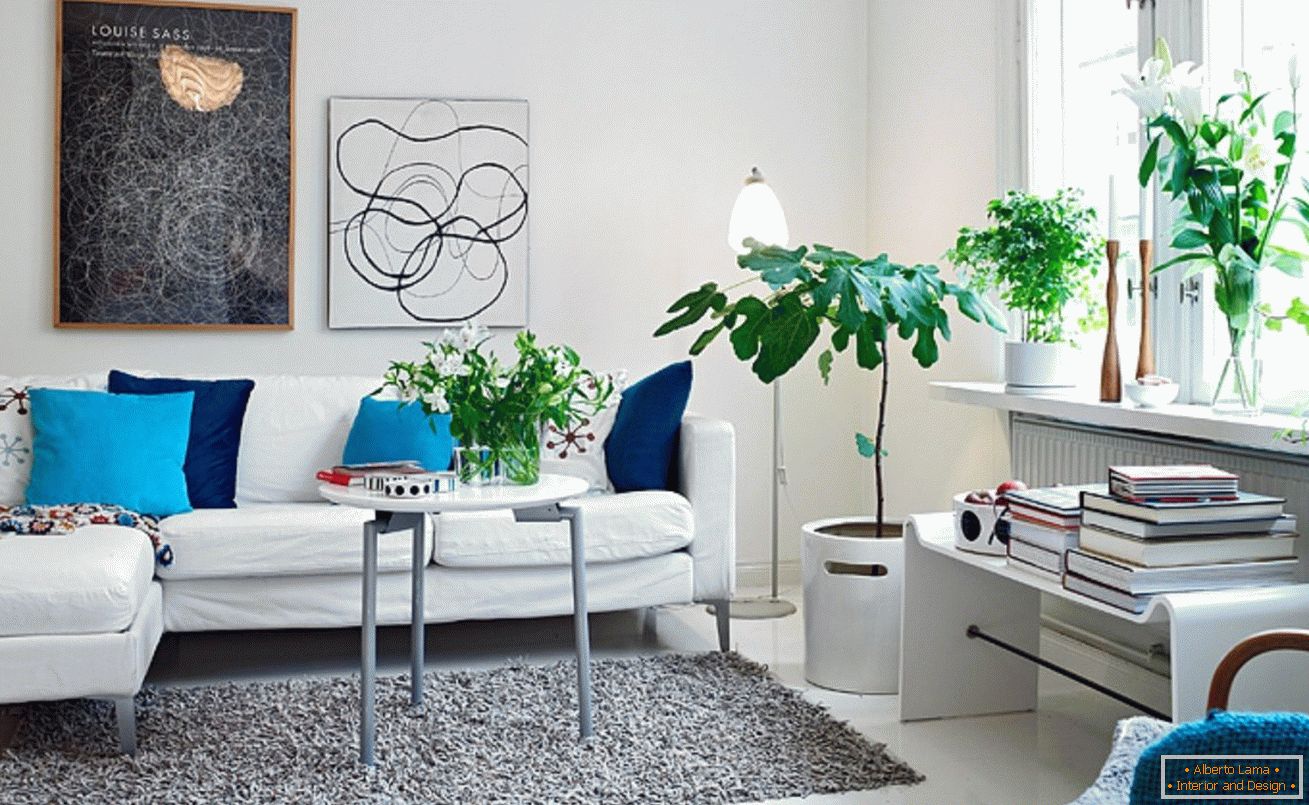

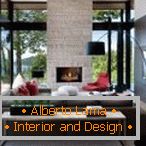

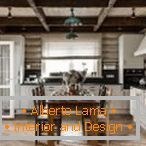
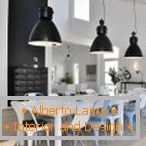
Although some experts in the history of design suggest that the birth of the Scandinavian style began even earlier (almost 200 years before), when King Gustav III ascended to the throne in Sweden. He devoted much time to fashion and everything that is associated with it. Perhaps for this reason, the king missed the conspiracy of aristocrats, which led to his death, but this is another story. Gustav on his example began to show the Swedes that, as if beautifully did not draw up their homes, the British, Italians and French, their style can not just copy, but add something of their own. Baroque and rococo by then were replaced by a graceful empire, which in Sweden went on a very different path, where it "overgrew" numerous elements, characteristic only of the northerners.
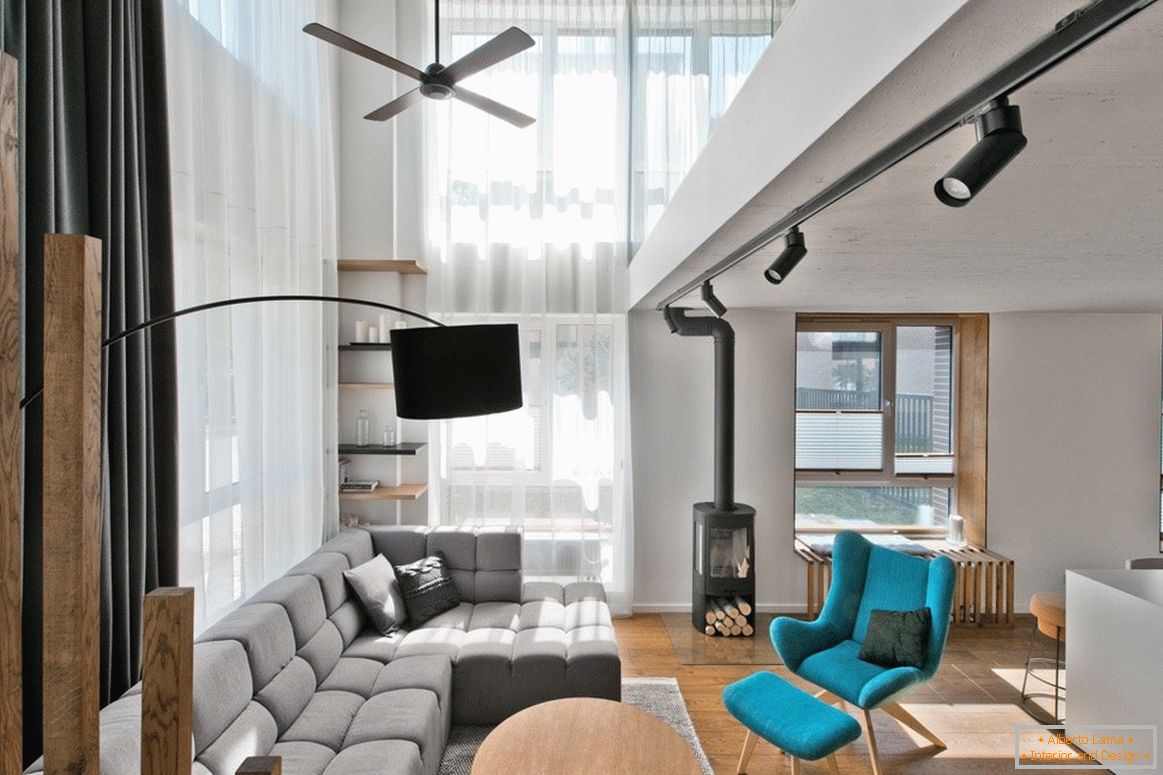

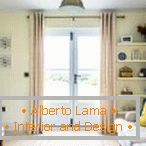
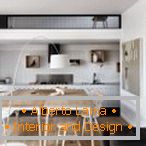


For three centuries the direction was finally formed and strengthened. Unfortunately, until recently, no special attention was paid to it, until modern Europe (the fashion-maker), tired of pretentiousness, pomposity and luxury, turned its eyes to simple styles. It happened in the 30s at the International Exhibition held in Stockholm. Designers demonstrated their work reflecting the way of life of the average Swedish or Finnish citizen. The show was a success, which was consolidated in 20 years in Canada and the US after repeated exhibitions. Since then, the direction has its official name, increasingly flickering in textbooks and magazines on interior design.
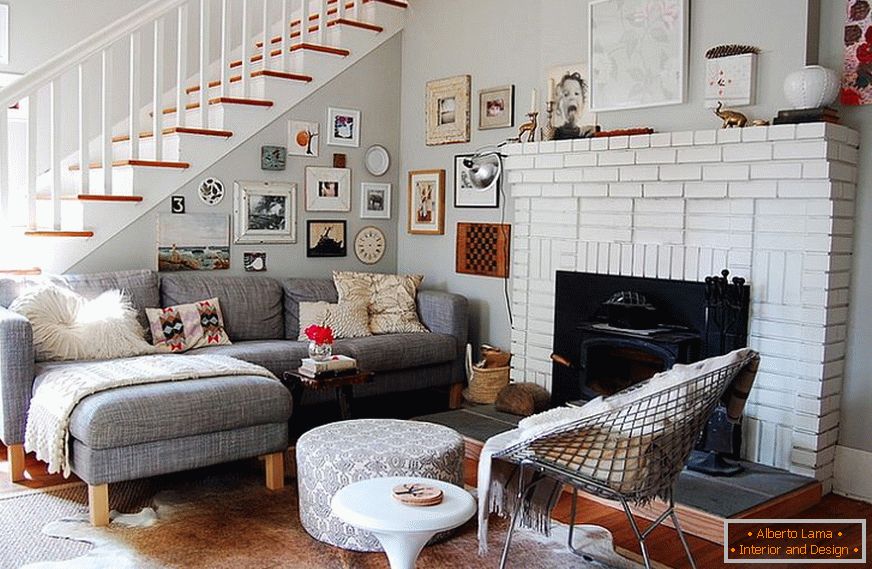
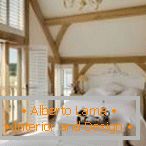


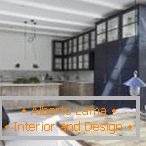
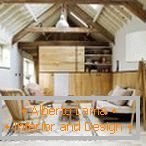
Luxury gradually gave up positions, and houses and apartments, like a breath of fresh air, broke into new directions. Some of them were kept as low as possible (minimalism, technological modernity), while others allowed themselves the presence of rough details (provence, rustic, industrial, fusion). And at this very moment a quiet and inconspicuous Scandinavian way of life (the most mysterious concept), interested the tired of the chronic pursuit of the time of Europeans themselves. With the arrival in the house of the Hugg, who began to devote whole treatises, where they disassemble Scandinavians except under a microscope, the style of the interior became popular and characteristic for them. He is calm, but not devoid of emotionality (albeit meager).
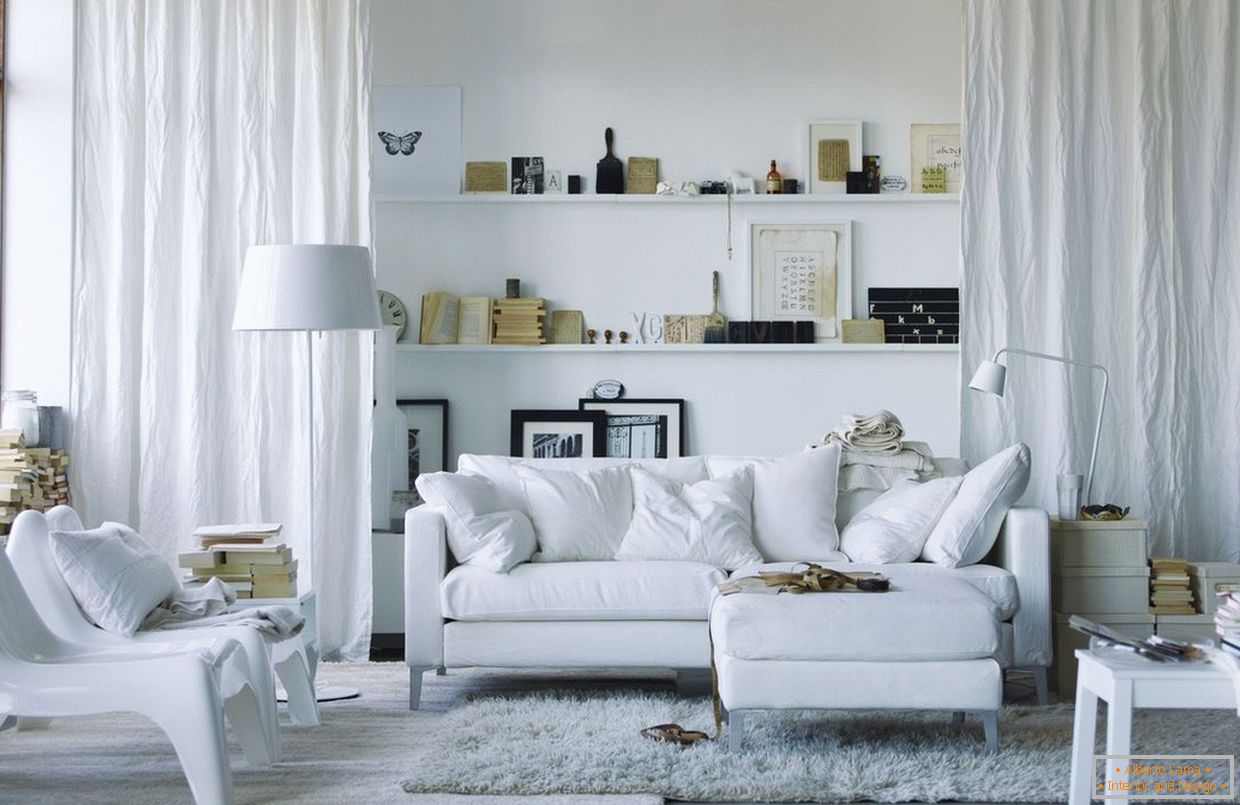
Features Scandinavian style
The main features, according to which the Scandinavian style can be distinguished from the closest "relatives", include the following features.
- A tranquil, natural color scheme, in which white predominates (the color of the snow canvas - the native landscape for the northerners).
- The minimum amount of decor. The space must breathe.
- Only natural materials: no synthetics or plastic.
- The most simple finish.
- Open plan. Northern style does not really like the doorways, so often resorts to combined facilities.


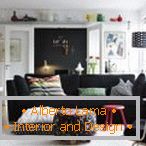
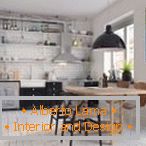
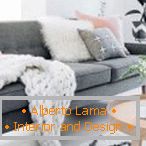

While decorating the house it will be possible to save without buying a "multilayered" finish, but natural wood or stone will require additional costs.
Exterior and features of the building
Projects Scandinavian houses are reliable. The architect must carefully check all the details and remove the excesses that do not carry any functional load. Northerners prefer to settle in private country houses, which are completely unlike our traditional dachas. When building Scandinavians always pay attention to the surrounding nature: it should not be destroyed in any way. From the summer coloring there is only the location, but in general the dwelling is more like a comfortable log cabin hut.
Read also: Design of facades of private houses 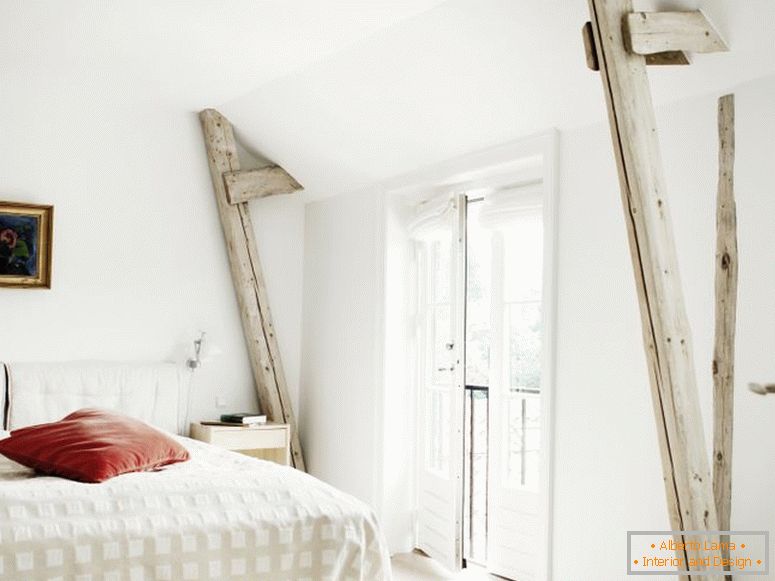
The place is chosen as calm as possible with charming countryside landscapes, which can be admired through panoramic windows. This is another feature of these houses: they have to let in a maximum of light and allow them to calm down spiritually for seeing the surrounding beauties. The devil did not develop from scratch, because in the north such a short summer and so little sun that you want to swim in it if possible. In single-storey dwellings, panoramic windows can grow into glass walls.
Previously, houses were built using the same technology as our log buildings, but later they either plastered the walls with boards from the outside (lining), or use the treated timber as material. Scandinavian buildings usually have a "sharp" gable roof. This "technique" allows the snow to be cleaned independently, rather than accumulate in the form of deposits. Here, flora can be rampant: roofs are often overgrown with moss, creating a disguise under the surrounding nature. The presence of the second floor is not necessary, but for large families it becomes a necessity. Attic room can successfully replace it, the northerners love to equip under the roof cabinets, nurseries and bedrooms.

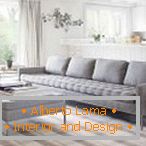
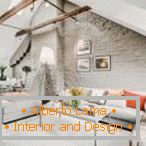
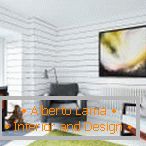

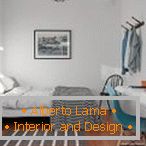
To talk about windows. This amount of sunlight is explained by another feature of the Scandinavians: they are actively using alternative sources of energy, among which the sun is in the first place. After all, the Swedes, Danes and Finns are trying not to harm the environment. Do not be surprised when you see solar panels on the roof, and a windmill near the house.
Who chooses the Scandinavian interior
Этому стилю отдают предпочтение, как правило, молодые, энергичные люди. Они хотят оформить свое жилище с максимальным комфортом, которому в то же время не чужда экстравагантность. «Уединение и уют» за правило берут те, кто слишком сильно устал от чрезмерности во всем: в красках, деталях, в формах. Они хотят приходить домой и чувствовать, что только здесь можно расслабиться и все переживания оставить за входной дверью. Переход в свою крепость сродни достижению нирваны в йоге, когда человек полностью отпускает все бытовые мелочи и неурядицы, чтобы расслабиться. Floorноценный отдых, помогает с удвоенным рвением бросаться в водоворот будничной жизни. Именно поэтому скандинавский стиль становится замечательным контрастом для тех, кто умеет отдыхать, чтобы накопить силы для еще более интенсивной работы.
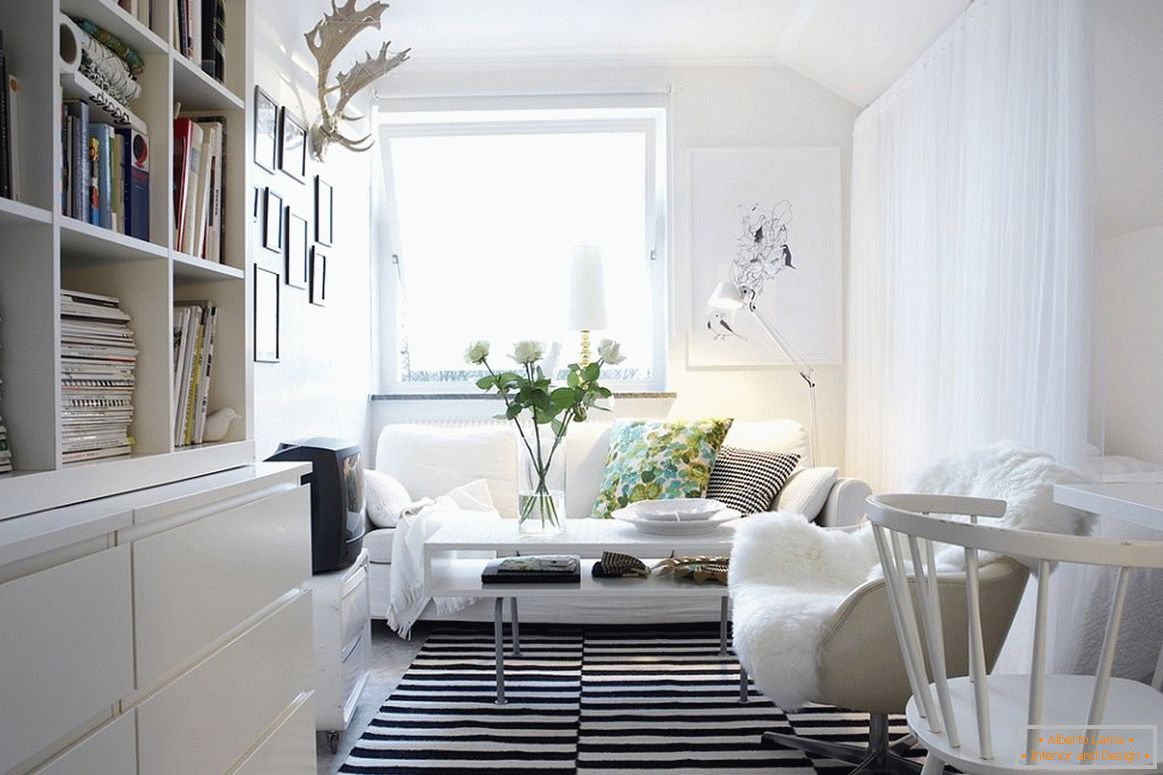
Colour
The main canvas in the Scandinavian style was white. It not only causes nostalgia for the server peoples over the vast snow-covered expanses, but also expands the space, reflects light, which is so small in a cold climate. To avoid the feeling of emptiness "ringing in the ears", use variations of white with a little warmth: creamy, pearl, ivory. Complement it with cool cool shades. Imagine a palette of winter, what will it look like? Blue-and-white with transitions in blue, gray and even turquoise. These tones and become a pair with white make up the basis of the color picture. Nobody forbids to add to them a grain of "warmth" in the form of shades of pink, purple, green or yellow, but they should be small. In general, to determine the color scheme, it is enough to go out into the countryside and look at its palette.
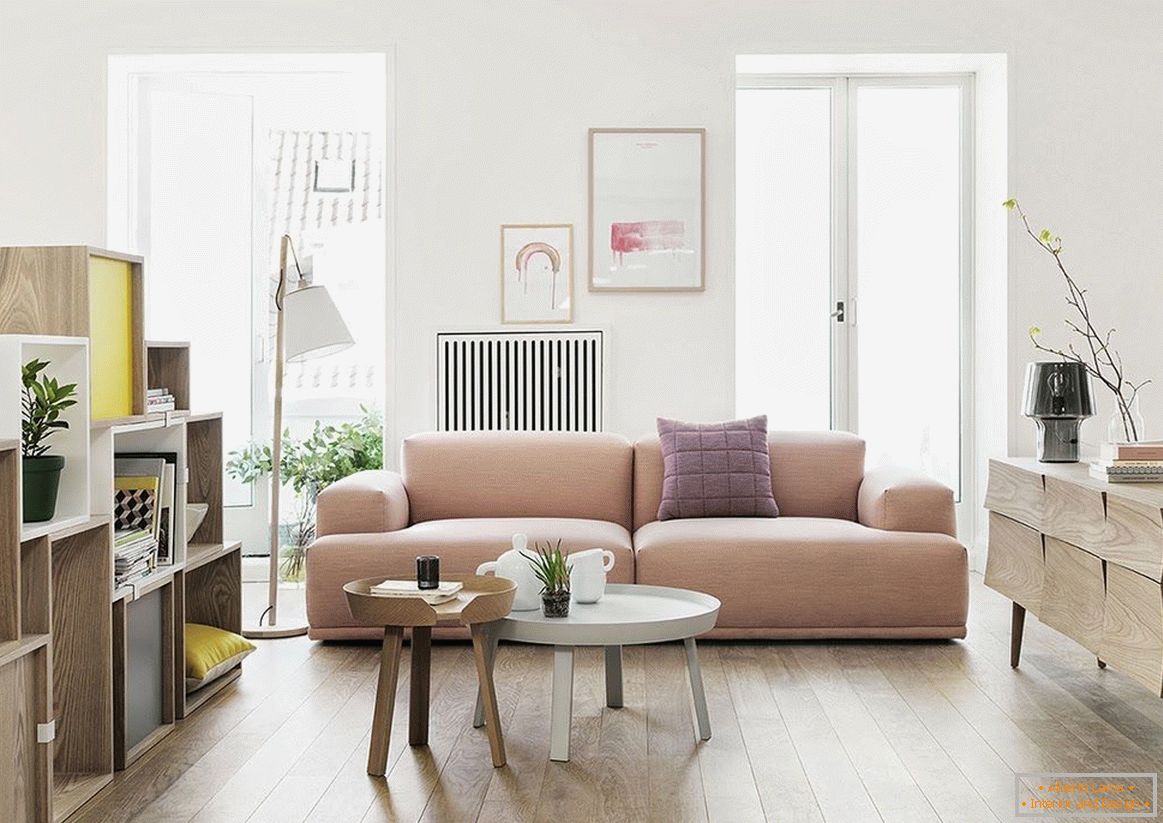
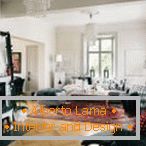

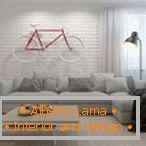
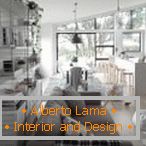
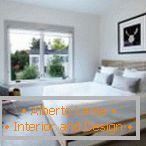
Scandinavians are not so boring people, as it may seem at first glance. They are also not alien to brightness. In the middle of the last century, designers of one Finnish company came up with a print of "poppies", which glorified the owners and became the business card of the organization. He depicts bright flowers, which are rather primitively painted on a white or the same screaming background. This print Scandinavians actively use in the interior of their homes.
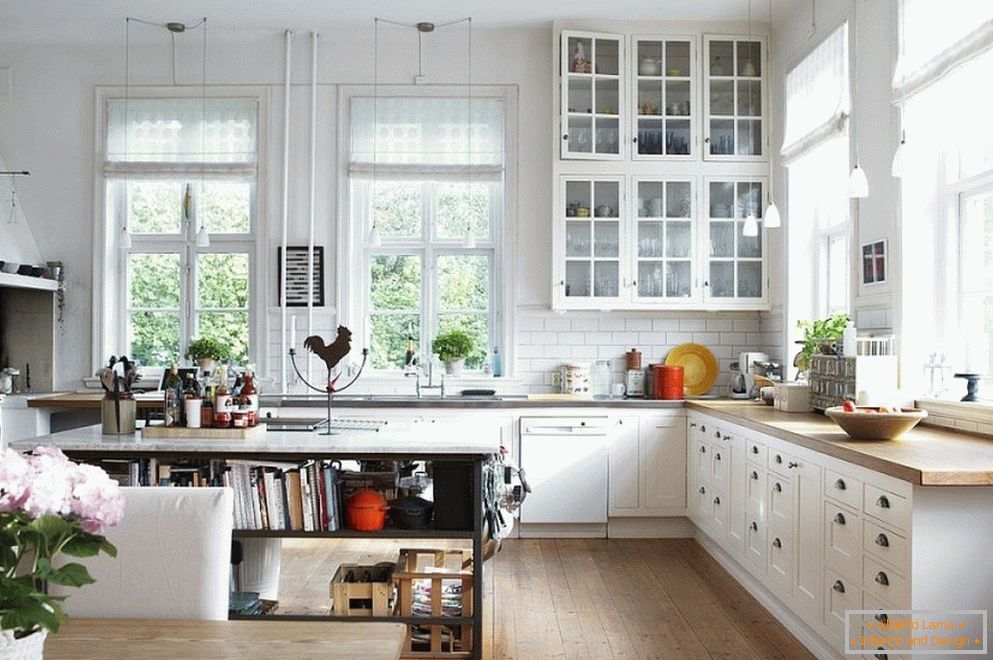
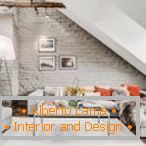
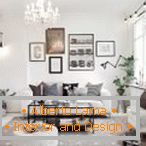
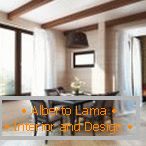
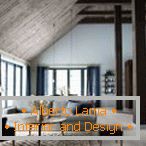
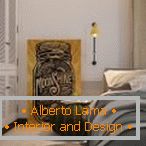
Materials and methods of decoration of premises
Scandinavian style in the interior of a country house dictates strict rules regarding materials for finishing works. It's very simple: they can only be natural. Finns, Swedes and Norwegians prefer wood (oak, elm, birch). It is faced with walls, decorating the ceiling and covering the floors. Scandinavians do not like the wallpaper, preferring rough paint strokes. Wood is used not only for building and finishing houses, but also in creating furniture. It is almost entirely made of this material with few exceptions, when using metal or natural stone. Forget about synthetic drapery or plastic tiles, they will reduce the cost and destroy the picture of the Scandinavian interior.
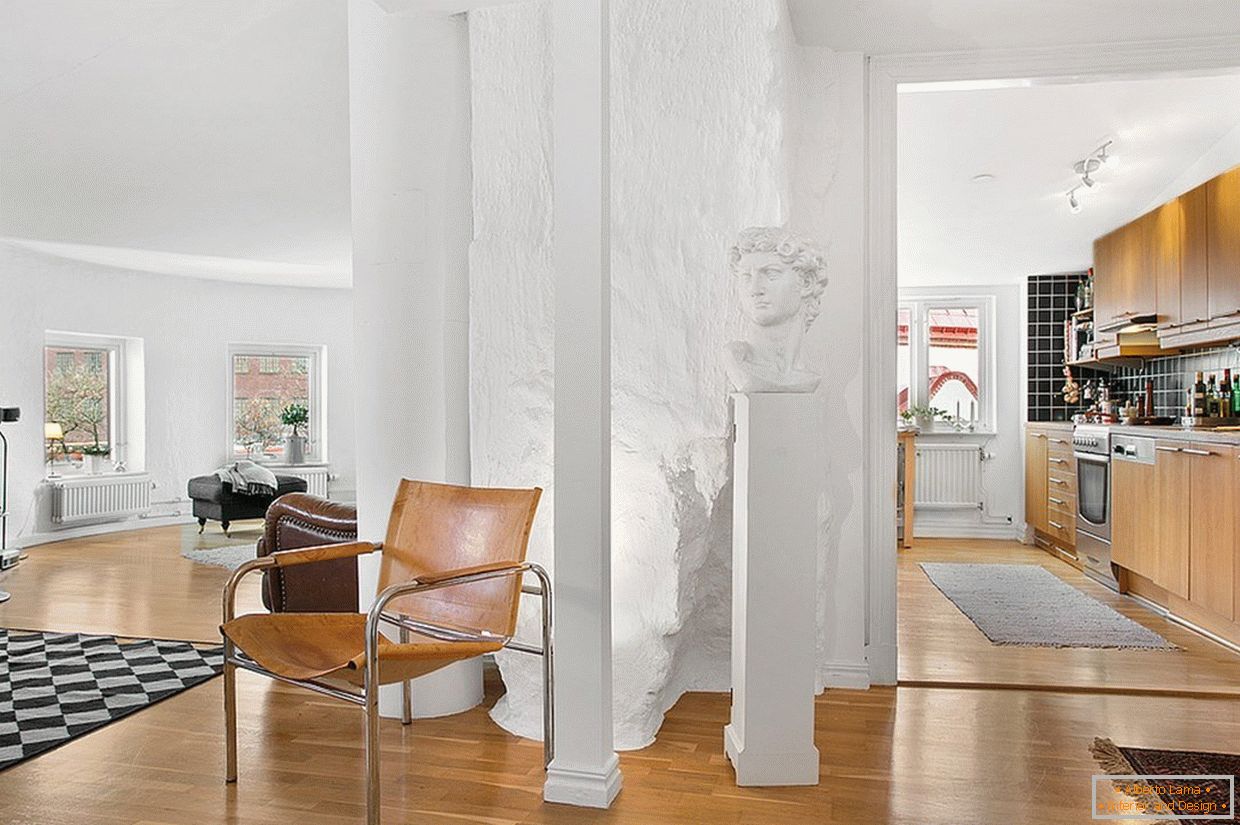


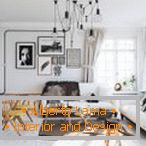

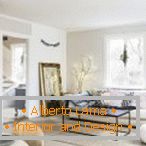
Walls
Walls обычно штукатурят и просто красят в светлые тона. Приоритет опять же на стороне белого и его оттенков. При выборе краски обращайте внимание на ее сочетание с освещением в комнатах. В магазине она может смотреться совсем иначе, нежели в доме. Грубые мазки тоже приветствуются: легкая небрежность при нанесении только подчеркнет рельеф стены. К обоям прибегают редко. Ими частично обклеивают, как правило, только одну стену, на которой необходимо сделать акцент. Оттенки выбирают нейтральные, а рисунок обычно «ботанического» характера (цветочный или лиственный орнамент, неброская клетка). Дополнительно части стены могут декорировать деревом, камнем или кирпичом. Последнее выглядит словно «привет» от индустриального стиля, но в скандинавские рамки вполне вписывается.
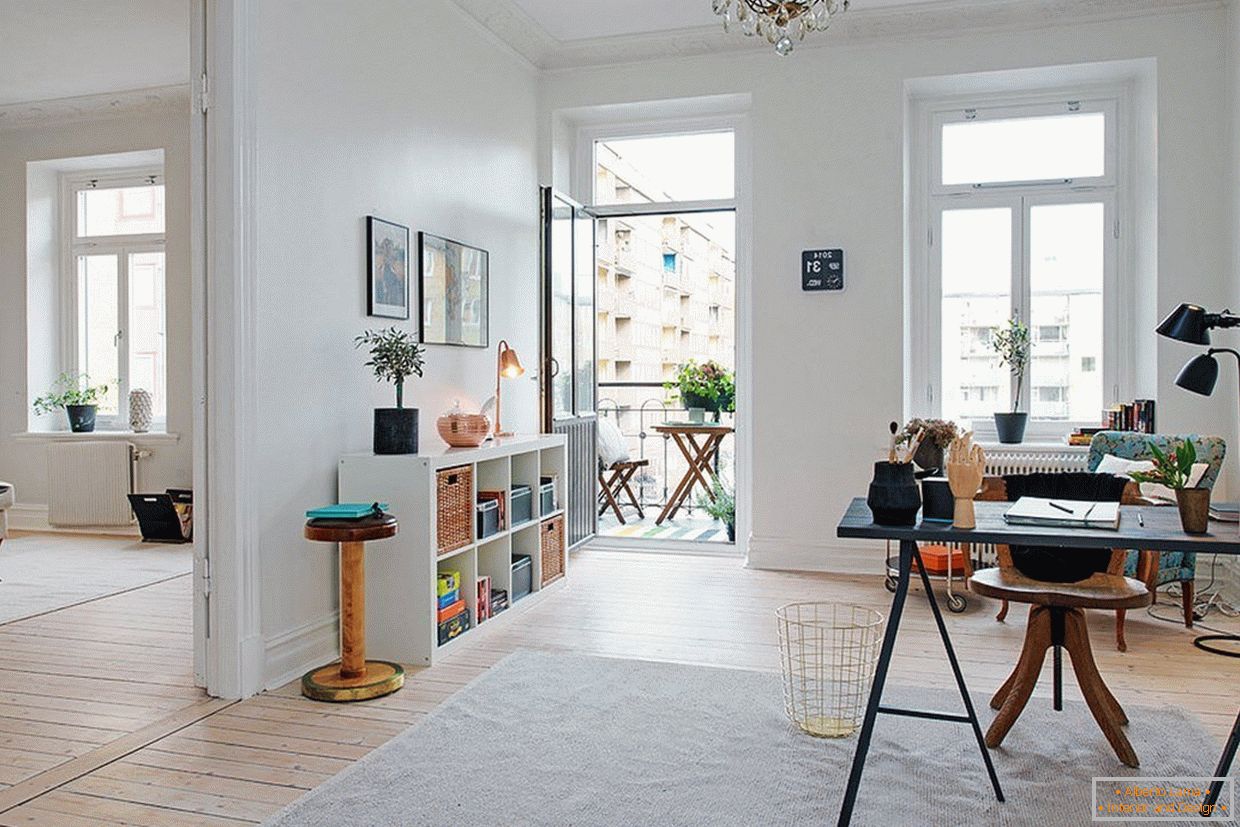
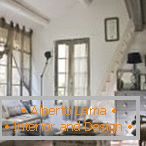

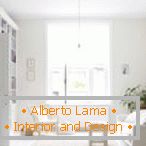
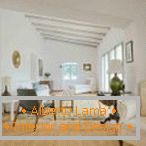
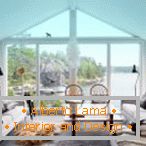
Floor
Floor застилают ламинатом, хотя иногда используют и паркетную доску, которую окрашивают одним слоем, чтобы проглядывал естественный рисунок древесины. В цветах предпочтение отдается светлым оттенкам коричневого. Запомните, северяне предпочитают цвета близкие к натуральной сосне и относятся с пренебрежением к красным тонам. Коричневый выгодно оттеняет белизну стен и делает атмосферу комнаты теплее. Нелишним будет пушистый, мягкий ковер или звериная «шкура», которая небрежно брошена перед порогом или под диваном у камина. На кухне и в ванной полы застилают керамической плиткой нейтральных тонов (возможен шахматный узор): черного, белого, серого, синего или фиолетового.
Читайте также: Bathroom в классическом стиле: дизайн интерьера 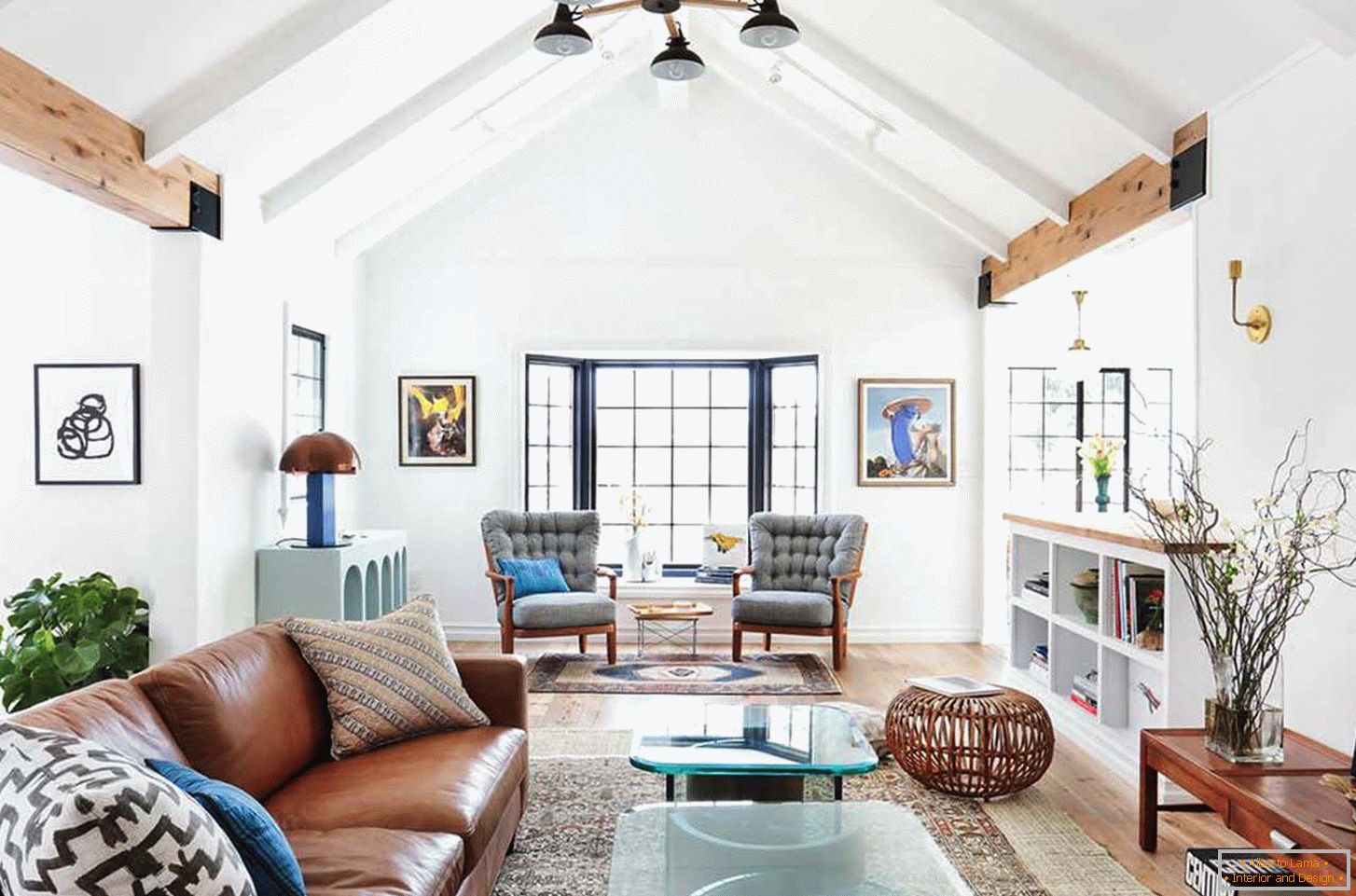
Ceiling
Ceilings must be bright. No stucco, painting or other bright elements are placed on them. Scandinavia from time immemorial ceilings simply plastered and painted or whitened. This practice has survived to this day. The only allowable assignment is the popular stretch ceilings, but they must be white and matt. Glossy shine from above in the room will be superfluous, will attract unnecessary attention.
Choice of furniture and textiles
The most striking example of Scandinavian furniture can be considered budget items from Ikea. They are original in their simplicity and non-standard solutions. Furniture is chosen from natural wood. Materials based on compressed and glued waste for such an interior will not work. Forget about the notable decorative elements, which often decorate the legs, handles or front walls of cabinets, beds and tables. Usage is encouraged:
- Marble (countertops).
- Glasses (coffee tables, decor of furniture doors).
- Metal (chairs, decor racks or cabinets).
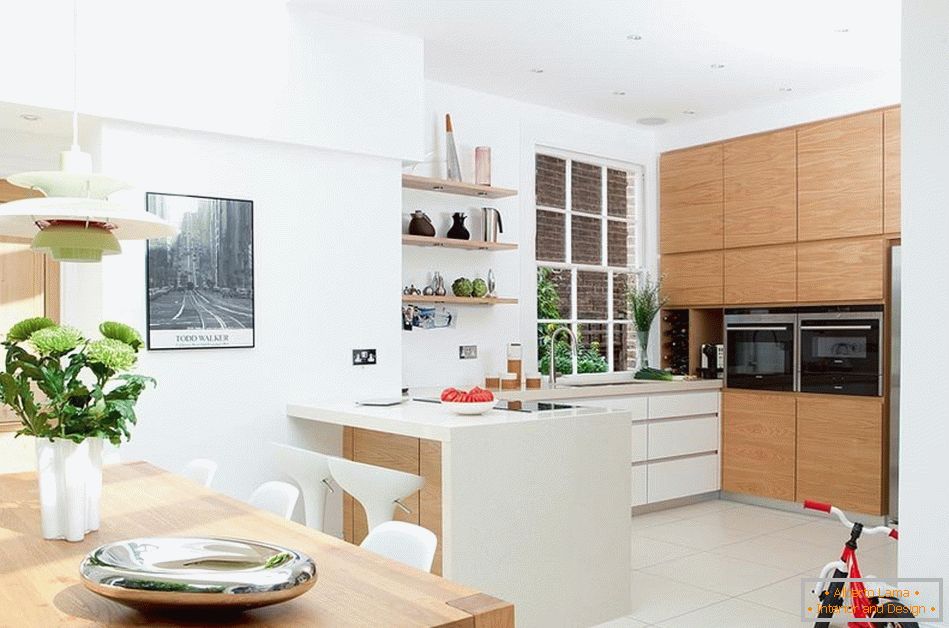
Nontrivial forms, perhaps, the only thing that can be played with a fantasy. Scandinavian style welcomes the originality and whimsicality of the lines that will revitalize the interior.
To clearly understand what kind of furniture it is, it is enough to look in the catalogs of the 50-60s. They feature designer works by such masters as Saarinen, Jacobsen, Eames or Aalto.
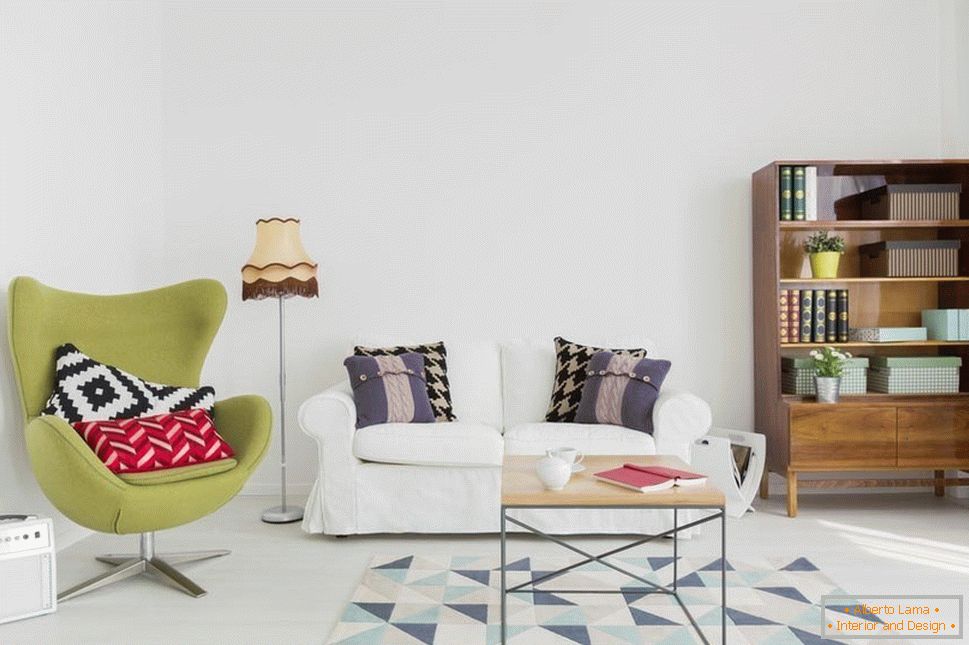
What to focus on
The accents are mainly color. As already mentioned above, attention can be sharpened on a wall, pasted with wallpaper with ornament or on a collage of "different" pictures, photographs. By the way, through this decor in the room can break even bright colors.
Оригинально смотрятся фотографии в черно-белом цвете с яркими элементами (красное платье, бордовая помада, синие глаза). Colourочные принты тоже могут занимать часть стены или быть нанесены на мебель. На диване нейтрального серого цвета размещают пару-тройку сиреневых подушек, а шторы из натуральных тканей могут играть оттенками зеленого. Не забывайте о звериных шкурах (точнее их имитации), которыми покрывают стулья, диваны или кресла.

И конечно северный интерьер не обходится без комнатных растений. Не нужно превращать помещения в филиал ботанического сада, достаточно нескольких горшков на комнату. Забудьте о цветочных шеренгах на подоконниках, панорамные окна такого попросту не допустят. Colourы размещают на столиках или специальных стойках. Предпочтение отдают декоративным туям, папоротникам, драценам, кактусам, а в ванной можно разместить настоящий бамбук, которому ее микроклимат придется по душе. И конечно в любом доме главный акцент — это камин. Горячее сердце дома, его символический центр, к которому будет тянуться вся семья в суровые зимы. Рядом с ним устанавливают декоративную поленницу, которая добавит уюта.

Lighting Features
In conditions of a shortage of light on the lighting devices do not save, as on reflective surfaces. On the ceilings are placed globular chandeliers on long holders. They are assisted with additional sources of point light, which can also emphasize individual areas of the room. On the walls are fixed sconces, and on the floor and table tops - lamps on thin legs. Scandinavian style is characterized by the illumination of a certain area of the room with instruments of the same color and shape, but of different sizes. When designing a future country house project, always focus on the rule of three types of light sources:
- The upper.
- Directional.
- Decorative.

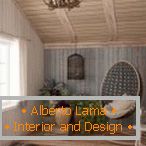

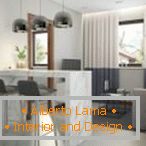
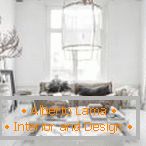
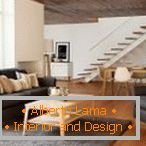
Room decoration
In the harmonious concept of the huggie, there is one golden rule: each room must fulfill its specific functions. His appointment is necessarily emphasized, but the room is not allowed to get out of the general atmosphere of the house. That is, through all the rooms the style goes through a thin thread, to which the situation is "strung". It is everywhere unique, but in the interior picture there is harmony and coziness. The interior design of the country house is worked out in advance, along the way consulting with specialists or looking into fashion magazines. You can decorate a house with your own hands, but you must take into account all the details to avoid a miss and create an unnecessarily sterile, hospital atmosphere.

Perhaps the most important rule to follow is a reflection of the inner world of the hosts in the decoration of the rooms. The direction is focused primarily on comfort. You should be comfortable and cozy in your own home, so transfer the "state of mind" to your home.
Living room
In the living room you place a minimum of necessary furniture. It is enough for a pair of armchairs and a wide, spacious sofa, which is also transformed into a sleeping place for late guests. A low coffee table with a glass surface and metal legs is placed in a separate corner, next to the book rack.

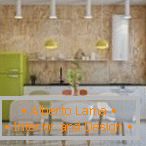


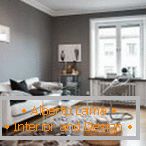
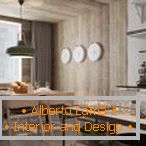
Позаботьтесь о направленном освещении для читающих: это может быть бра на стене или светильник на полу. Широкие окна обычно не занавешивают тюлем, ведь днем необходимо пропустить максимум света, а ночью их закрывают плотными шторами нейтрального цвета (допустимо с ненавязчивым узором). Floor возле дивана застилают мягким ковром. На стены вешают группу стильных картин. Не забывайте о подушечках, мягких пледах и шалях, которые небрежно бросают на диван и кресла. Одну стену можно полностью закрыть высокими стеллажом серого или коричневого цвета с нишей под телевизор и немногочисленные декоративные элементы (тоже нейтральных оттенков). Высокий папоротник в изящном и простом горшке добавит жизни в помещение. Если загородный дом будет оборудован камином, то гостиная идеальное место для его размещения.
See also: Constructivism in the interior +50 photo style 

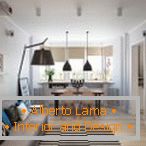

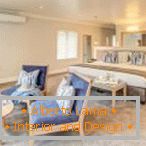

Kitchen
The kitchen is usually combined with the dining room. Zoning space is easy to do with the help of a decorative platform, which is put a dining table and chairs. Its main decoration will be a panoramic window that will allow you to have a meal, having a beautiful view before your eyes. In the kitchen itself put ready-made suite of light wood shades. Permitted liberties in the form of metal handles or glass doors. On the floor lay a tile of one or a maximum of two colors. On the apron, you can recoup, laying it out of bright material in a rich purple or green color. Remember that the warm tones contribute to the appetite, so it is here that you can abandon the perfectly white in favor of its softer shades. Small pots with greens are placed directly on the working area of the table, and on the dining surface a vase with fresh flowers for comfort.

Bedroom
In the bedroom they put a wide bed, which is covered with a coverlet of gray or black color. On the bedside table necessarily place fresh flowers or a houseplant and a lamp. Its plafond is acceptable to choose a bright shade. In the corner you can hang a "floating" wicker chair with a rug and pillow, and next to a miniature rack or a pair of shelves with your favorite books.
Обстановку оживляют парой мягких вязаных пуфов или декоративным элементом на стене, в которую упирается изголовье кровати. Имитация оленьих рогов, выкрашенная в белый цвет, в этом помещении будет смотреться оригинально. Floor застилают мягким, приятным на ощупь ковром с рисунком, который перекликается с другим текстилем в комнате.
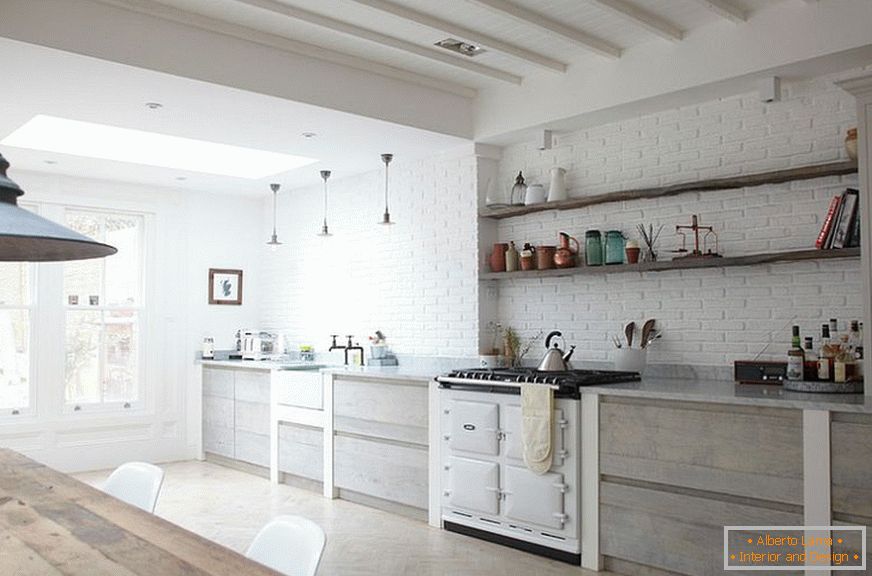
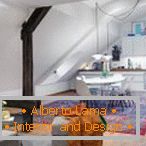
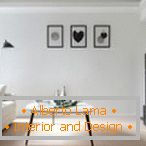
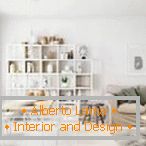
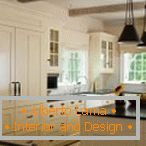
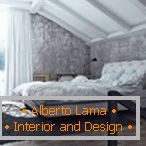
Children's
In the children's room all the same adhere to the "snow-white" atmosphere, but in this room add more bright colors. A child for full development simply needs to live and grow in a "colorful" atmosphere. Possible pink or yellow textiles in the furnishings and on the windows.
One wall is usually decorated with a painting, in the creation of which even the child can take part. The design process will be fun and exciting. The original element will be the placement of the "tree of knowledge" in the corner. From natural wood create a decorative rack, the branches-shelves of which rest on the trunk. They put books and toys, and next you can install a small armchair with a table or a full working area. Learn the child will be more interesting, because for every new product he will have to climb a real hundred-year oak! Such a design course fits in with the original Scandinavian style: a natural material that emphasizes closeness to nature. Functional minimum for a nursery: a rest corner, a bed, a wardrobe and a pair of ottomans.


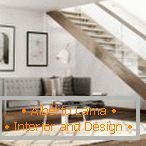
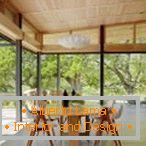
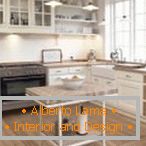

Bathroom
In the bathroom set closed shelves to store household trivia, because parading can only put a stack of white towels. Facing the room with tiles or wood panels, which are treated with special substances that protect the material from increased humidity. Ceramics is chosen either monophonic, or with geometric patterns. Do not skimp on mirrors, in this room there are not many of them. A bright accent will be a shower curtain with floral print. The original shell of solid stone will look original, which will emphasize the originality of the situation.
Entrance hall and corridor
В прихожей используют «мебельный» минимум. Откажитесь от громоздких гардеробных в пользу простой вешалки и специальной «тубы» для зонтов. Узкий, высокий комод разместится под широким зеркалом. Оживить обстановку можно с помощью декоративной ниши в стене с парой нейтральных безделушек и нескольких картин или фотографий на стене. Floor застилают ковриком темных тонов. В загородном доме лестница на второй этаж обычно размещается именно в прихожей. Ее можно оставить в первоначальном виде, либо организовать под ней отдельную зону для хранения вещей.
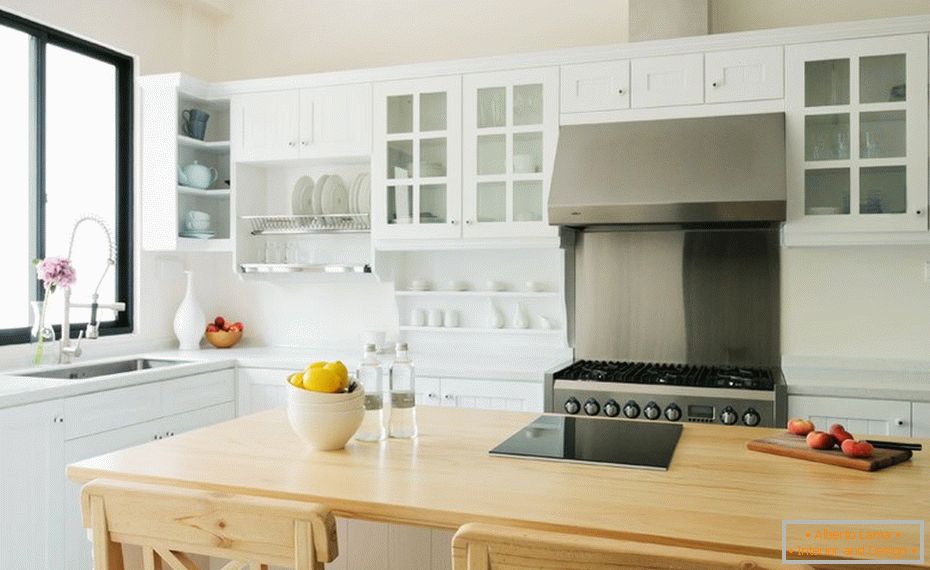

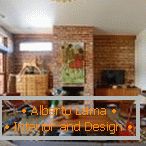
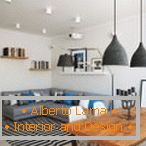
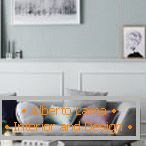
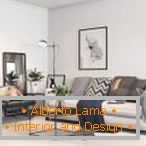
Neat, closed shelves will be a real salvation for large families who find it hard to cope with the mess. Do not forget about placing additional lamps along the entire corridor wall or the hallway. These are the very premises that are deprived of the already rare sunlight. Deficiency needs to be compensated on several levels at once.
Conclusion
The Scandinavian style came out on the world design arena as an ethnician, but over time it turned into a classic that went through more than one test. Fashion trends could not shake the "pillars" of the direction, only leaked into the northern interiors of a couple of elements. Your country house should breathe with diligence, simplicity, ease and coziness. At the same time, it must be tempered by a slight "winter" cold, which is close to both Scandinavians and Russians. Organically in the direction of the rough natural elements fit: real stumps instead of chairs, branches-holders for things on the walls or a decorative "path" from wood splits on the floor. Your home is your cozy fortress, in which it is nice sometimes to be locked from the outside world. It is this idea that carries a severe, serious and practical Scandinavian style.



